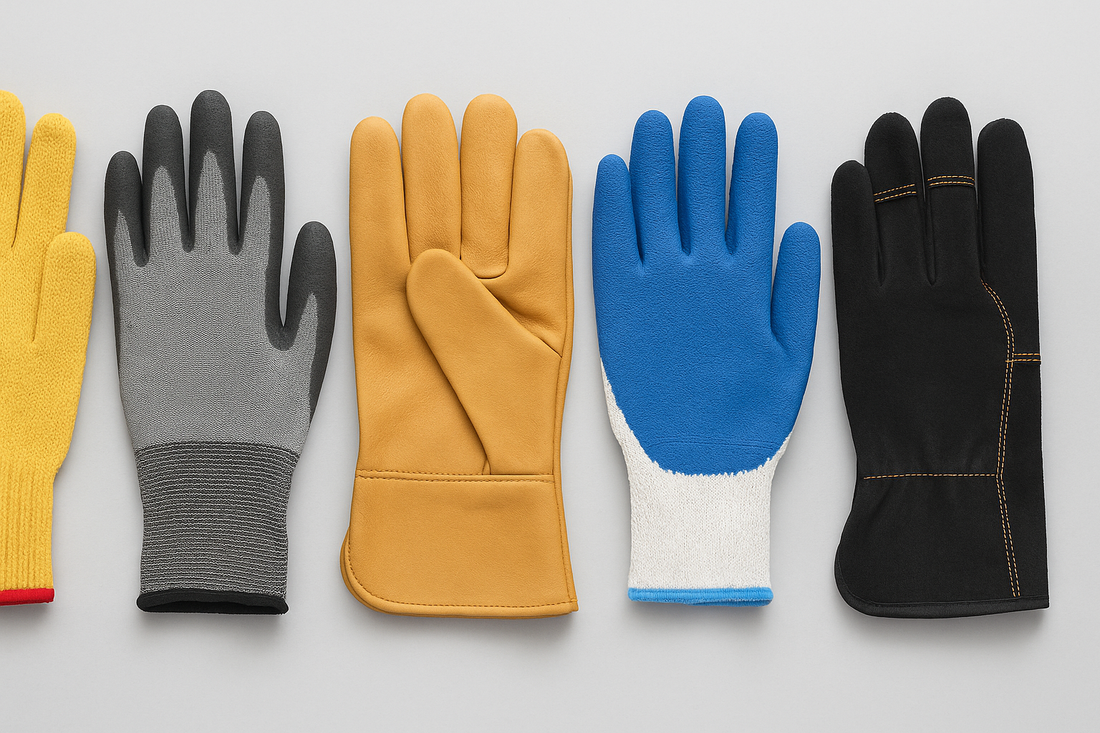
Don't Commit These Five Mistakes When Choosing Gloves
Share
A manager, in a California-based mill, delegated a steel-cutting task to the team in the factory while setting a turnaround time of 3 hours. But, unfortunately, it stretched up to 7 hours— wrapping up additional time. Upon investigation, the workers complained that their gloves were the main culprit behind this slack. The lesson did he learn out of this delay? When it comes to efficiency, glove quality matters.
In case you’re a manager, pay close attention to this recommendation.
When going for bulk purchase, you must avoid common glove buying mistakes in order to empower the workers to perform better, faster and safer. If you want to purchase ideal gloves for your team, this blog is for you.
Mistakes You Should Never Commit While Buying Gloves
1- Ignoring Industry Needs:
This is where most managers might trip up. There is no one ideal type for all industries when it comes to gloves. The nature of work determines the suitability of gloves for efficient performance while maintaining safety. A pair of gardening gloves wouldn’t do well if you hand them to a worker designated with a rigorous task such as steel cutting. In the latter use case, the glove pair needs to be made from robust material such as Aramid fibers (Kevlar and Dyneema), exhibiting tensile strength and heat resistance. On the other hand, gardening gloves are engineered using cotton or simple leather.
2- Overlooking Comfort and Fit:
The Health+Safety publication shares a study which indicates that better grip and comfort of gloves leads to better productivity—yielding 4x faster task completion rates. If a manager fails to account for workplace diversity, chances are dozens of workers will have a hard time doing their job. I personally have seen many workers chalk up their inefficiency to misfitting gloves. For instance, an excessively tight fit will bring discomfort when holding a cutter; whereas, an overly loose fit will lead to a weakened grip, causing the tool to slip and fall on the ground.
3- Underestimating Insulation Needs:
Workers earning their livelihoods in the oil and gas industry, fire-fighting and emergency response often have to bear high temperatures. In such a scenario, the suitable gloves would be those that offer excellent heat insulation. Workers having to settle for normal gloves are prone to potential burns or severe injuries, wreaking havoc on productivity and leading to delayed tasks. Even gloves exhibiting a limited level of insulation can cause discomfort when temperatures range between 43 to 149 degrees Celsius.
4- Ignoring Dexterity:
Dexterity refers to the ability of a person to move fingers and hold objects with precision while wearing gloves. This property is crucial for workers who have to frequently deal with multiple tools such as screws, cutters and handles. Gloves lacking dexterity act as a culprit behind reducing the speed of the work, increasing the chances of error and early hand fatigue. All these minor factors accumulate to negatively impact the work performance, resulting in employees bearing the brunt of inefficiency.
5- Ignoring Sweat Control and Breathability:
Demanding industries such as construction, oil and gas and welding require working in high temperatures where excessive sweating is the norm. Gloves that lack proper ventilation and breathability lead to discomfort and irritation, bringing down the productivity of workers. Excessive sweat buildup inside the glove often causes mishandling of equipment and tools, which may translate into horrible blunders. Ignoring sweat control properties lies in common glove-buying mistakes.
What is the OSHA Rule For Gloves?
OSHA stands for Occupational Safety and Health Safety is a U.S. Federal Agency that is designated to implement workplace safety standards across the three mainstream industries, including the following ones:
- General Industry (29 CFR 1910 Subpart I)
- Construction (29 CFR 1926 Subpart E)
- Maritime (29 CFR 1915, 1917, and 1918)
According to the OSHA rules, the gloves provided to the workers must offer:
1-Harmful substances ( Chemicals, Oils and Solvents)
2-Severe Cuts, lacerations and punctures
3- Extreme temperatures
4- Electrical Hazards
Things To Consider Before Buying Gloves
No matter if you are buying gloves for personal use or considering a bulk purchase for workers in the company, take the following things into account:
1- Keep In Mind the Nature of Work:
Circling back to the discussion we had earlier in the article, it is pivotal to define what is the nature of work. Each job has different requirements in terms of safety, grip, dexterity and breathability when it comes to selecting gloves.
2- Survey The Workers:
Workers have a better idea of what fits best for them. You can ask them to clearly state their needs, and then proceed towards ordering the gloves in bulk. In a rare scenario, you may also have to get a few pairs of gloves
customized, especially for those whose hand profile is a bit of an outlier.
3- Reach out to A Certified Supplier:
Another smart move is vetting glove manufacturers before placing a bulk order. Check their online reviews, visit their manufacturing unit in person and ask for sample gloves. Compare multiple manufacturers for quality vs price ratio and go for one that strikes a decent balance between these variables. Well, the good news is that you do not have to put on a hunting cap and spend countless hours finding a credible manufacturer. SafetyMill is an ultimate virtual universe where you find quality, variety and affordability— all rolled into one under a single roof.
The Bottomline:
Work efficiency is a concomitant factor of employee productivity, which is linked to how they handle tools and ensure safety during demanding work. Proper glove selection plays a pivotal role in achieving a workforce that is efficient and confident, and it starts with avoiding common glove-burning mistakes.